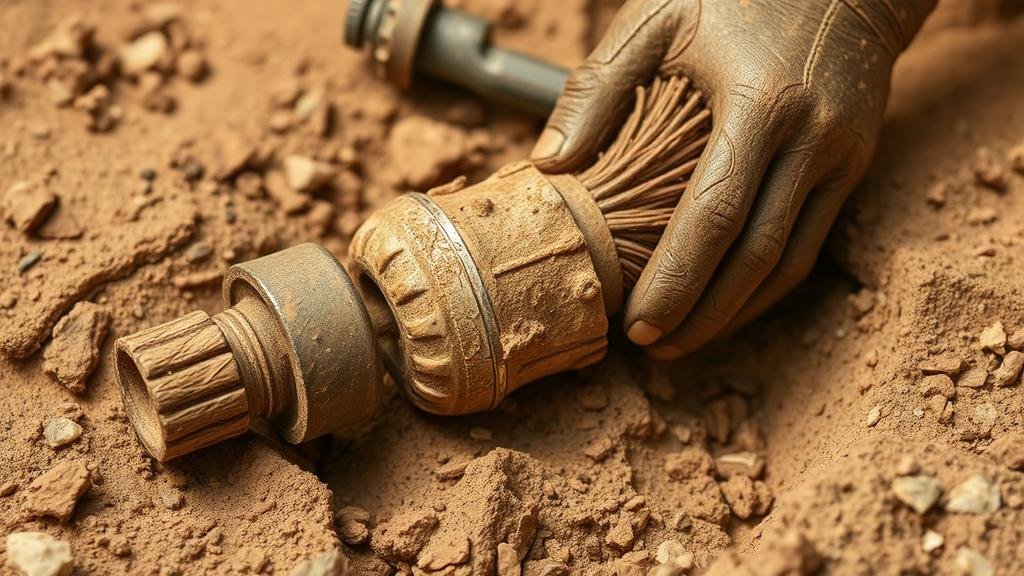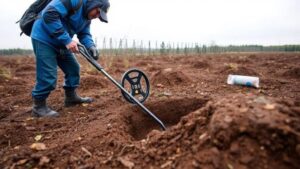Techniques for Handling Artifacts Embedded in Trap-Heavy Areas
Techniques for Handling Artifacts Embedded in Trap-Heavy Areas
The study and preservation of archaeological sites are inherently complex, especially in trap-heavy areas where artifacts may be deeply embedded. This article explores various techniques for handling these artifacts, emphasizing both the methodological approaches and practical applications utilized by professionals in the field. Trap-heavy areas often present unique challenges due to soil composition, moisture levels, and the potential for artifacts to be found in stratified contexts.
Understanding Trap-Heavy Areas
Trap-heavy areas refer to environments where geological and hydrological conditions lead to the accumulation and preservation of artifacts over time. e locations can include wetlands, river deltas, or areas with significant sediment deposition. The artifacts found in such regions often hold considerable archaeological value due to their preservation state. But, excavating these artifacts requires specialized techniques to ensure their integrity and context are maintained.
Techniques for Artifact Recovery
Several techniques can be employed to effectively recover artifacts from trap-heavy areas, each suited to specific conditions and types of artifacts. Below are some commonly used methods:
- Wet Screening: This technique involves passing sediment through a mesh screen while submerged in water. It is particularly effective in preserving fragile artifacts like bone or small tools that may not withstand traditional dry screening methods. Wet screening is also useful for recovering smaller artifacts that might be overlooked in bulk soil removal.
- Floatation: Floatation allows lighter materials such as seeds and small bone fragments to be separated from heavier soil matrices. This technique uses a water-based system where the sediment is agitated, and lighter materials float to the surface, making them easier to collect.
- Stratigraphic Excavation: Understanding the layers of soil and their historical context is vital in trap-heavy areas. Excavators implement stratigraphic methods to document and preserve the environmental context of artifacts, ensuring that they are recorded at their exact strata before removal.
- Photogrammetry and 3D Scanning: These modern techniques enable detailed documentation of artifacts and their contextual relationships in situ before excavation. This is especially valuable in trap-heavy landscapes where rapid sedimentation may obscure the stratigraphy after excavation.
Case Studies of Successful Artifact Recovery
Examining historical case studies provides insight into successful methodologies in trap-heavy areas. One prominent example is the excavation of the Oseberg Ship burial in Norway, where artifacts were recovered from an underwater context, emphasizing wet screening and stratigraphic excavation. The careful and methodical approach led to the preservation of intricate woodwork and organic materials that might otherwise have decayed.
Another important case is the preservation efforts seen at the Tollund Man site in Denmark. Archaeologists utilized flotation techniques to recover delicate organic artifacts while maintaining meticulous records of stratigraphy that highlighted the site’s historical significance. This approach not only ensured the artifacts physical integrity but also provided valuable data for future research on Iron Age practices.
Challenges and Considerations
While techniques for handling artifacts in trap-heavy areas can be effective, challenges remain. Soil composition changes, the presence of groundwater, and seasonal weather variations can complicate excavation efforts. Also, employing excavation methods too quickly without adequate planning can lead to the loss of context–an invaluable aspect of archaeological interpretation.
Professionals must also consider the ethical implications of their work, recognizing their responsibility to local communities and heritage. Engaging in dialogues with stakeholders can enhance the relevance and appropriateness of artifact recovery techniques.
Actionable Takeaways
- Use a combination of excavation techniques tailored to specific conditions of trap-heavy areas to ensure holistic artifact recovery.
- Maintain meticulous documentation practices that account for stratigraphic contexts, enabling informed interpretations later on.
- Stay updated on technological advancements, such as 3D scanning and photogrammetry, which can improve both recording and analysis of artifacts.
- Prioritize ethical engagement with local communities throughout the excavation process to foster goodwill and collaborative preservation efforts.
To wrap up, handling artifacts embedded in trap-heavy areas demands a multi-faceted approach that incorporates traditional excavation techniques alongside modern technologies. By understanding the unique challenges these environments present and implementing best practices, archaeologists can enhance the recovery and preservation of invaluable historical resources.



